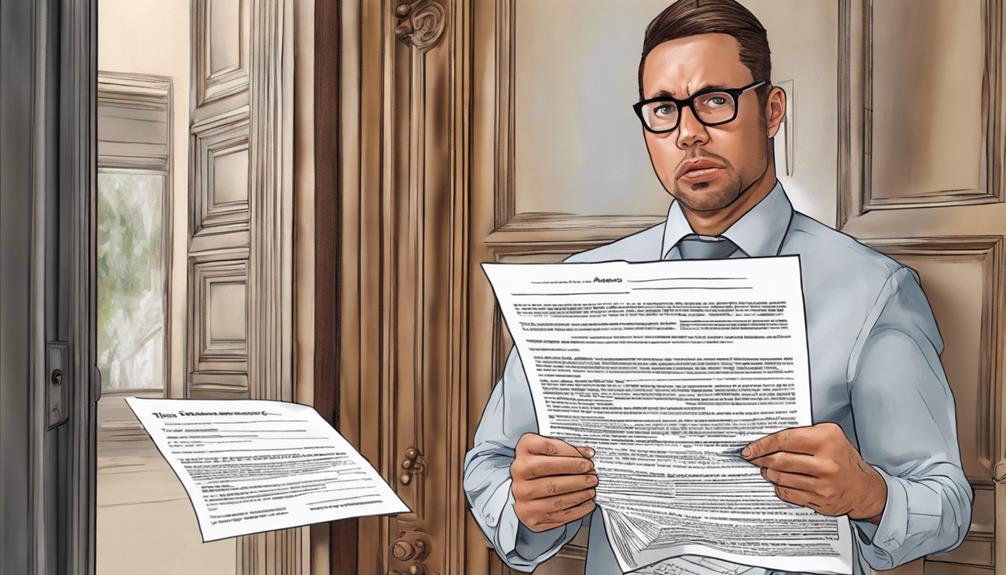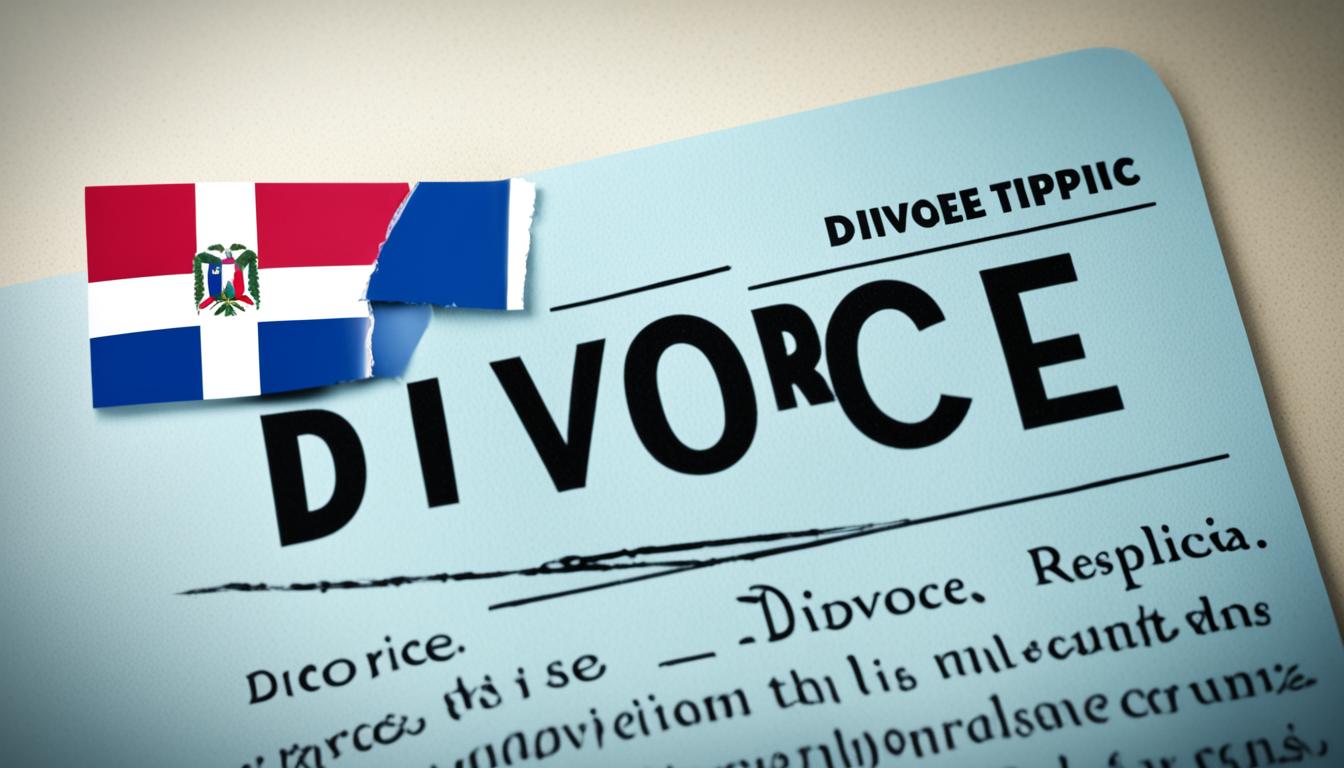Have you ever thought about the complexities involved in getting a divorce in Texas?
The process can be daunting, but fear not, as we are here to guide you through each step with clarity and precision.
From the initial filing to the final decree, understanding the nuances of Texas divorce law is crucial.
Join us as we unravel the complexities of this lengthy procedure and shed light on the essential factors to consider along the way.
Key Takeaways
- Select grounds such as cruelty or adultery.
- File to start the legal process and notify the spouse.
- Respond within 20 days, addressing claims.
- Wait for the final decree resolving all issues.
Grounds for Divorce
When considering a divorce in Texas, it's crucial to understand the various grounds upon which the legal dissolution of marriage can be based. In Texas, these grounds include insupportability (no-fault), cruelty, adultery, felony criminal conviction, and abandonment.
Insupportability stands out as the most common ground for divorce in Texas, allowing couples to end their marriage without assigning blame to either party. On the other hand, fault-based grounds such as adultery, cruelty, and felony convictions can significantly impact matters like property division and alimony during the divorce process.
Abandonment, which occurs when a spouse leaves without the intent to return, serves as another basis for divorce in Texas. Having a clear grasp of these different grounds is vital for anyone navigating the complexities of a Texas divorce, as it sets the foundation for the proceedings that follow. Understanding these grounds can help individuals make informed decisions and prepare adequately for the legal steps ahead.
Filing the Petition

To initiate the divorce process in Texas, we must file a petition with the court, outlining the grounds for divorce. This crucial document officially starts the legal proceedings and sets the stage for the divorce process. Once the petitioner completes and files the petition, the court issues a citation to notify the respondent about the divorce action. Proper service of divorce papers to the respondent is essential to ensure legal notification and compliance with court procedures.
Let's take a closer look at the key components involved in filing the petition for a Texas divorce:
| Key Components | Description | Importance |
|---|---|---|
| Filing for Divorce | Initiates the legal process | Essential step to begin proceedings |
| Petition | Outlines grounds for divorce | Provides legal basis for the divorce |
| Court | Issues citation to respondent | Notifies respondent of legal action |
Filing the petition is the initial step in the divorce process, marking the beginning of formal legal proceedings. This stage is critical for ensuring that all parties are informed and that the legal process is initiated correctly.
Providing Spouse Notice
Providing proper legal notice to the spouse is a critical step in the Texas divorce process, ensuring all parties are informed and the proceedings can move forward smoothly.
In Texas, spouse notice can be achieved through methods such as a waiver of citation or by enlisting the services of a Process Server. A waiver of citation is considered valid when signed after the divorce filing, indicating the spouse's acknowledgment of the proceedings.
However, in certain situations, publication or posting may be necessary to fulfill the requirements of legal notice. It's important to note that obtaining a court order is essential for posting, as simply informing the spouse about the divorce filing is insufficient.
Properly serving the spouse with legal notice is paramount for a smooth process, as it sets the foundation for the subsequent steps in the divorce proceedings. By ensuring that the spouse is duly informed and served with proper notice, the divorce process can advance efficiently and effectively.
Spouse's Answer and Counterpetition

Upon being served with divorce papers in Texas, the spouse has a 20-day window to file an answer, which can also include a counterpetition for additional claims or requests. It's crucial for the respondent spouse to carefully craft their response during this period. The answer provides an opportunity for the spouse to address the allegations made in the divorce papers and present their side of the story. If there are additional issues that the spouse wishes to raise, such as requests for specific assets or custody arrangements, a counterpetition can be included along with the answer.
Communication becomes essential at this stage, as the counterpetition must be sent to the opposing party for review and response. Additionally, the respondent spouse should be prepared to attend court hearings regarding the divorce to present their case effectively. By responding promptly, thoughtfully, and thoroughly, the spouse can ensure that their claims and requests are properly addressed throughout the divorce process.
Waiting Period and Divorce Decree
As the waiting period in Texas plays a crucial role in the finalization of a divorce, it allows for necessary time to address outstanding issues before the divorce decree is granted. Here are three key aspects to consider during this phase of the Texas divorce process:
- Final Decree: The final decree of divorce is the official document that outlines important details such as property division, custody arrangements, and support agreements. It serves as the culmination of the divorce proceedings.
- Resolution of Outstanding Issues: The waiting period provides parties with the opportunity to resolve any lingering matters, ensuring that all aspects of the divorce are appropriately addressed before the final decree is granted.
- Domestic Violence Exceptions: In cases involving domestic violence, exceptions to the waiting period may apply to expedite the divorce process and ensure the safety of those involved.
Understanding the significance of the waiting period and the final decree is essential for navigating the Texas divorce process effectively.
Frequently Asked Questions
What Is the Longest a Divorce Can Take in Texas?
In Texas, the longest a divorce can typically take is about 6 months to 1 year for a contested divorce. Factors like case complexity, cooperation, and court availability influence the duration. Uncontested divorces may finalize quicker, in as little as 60 days. Hiring skilled legal help and effective communication can expedite the process.
How Can I Speed up My Divorce in Texas?
We speed up a Texas divorce by opting for uncontested proceedings, ensuring accurate paperwork and prompt filing, cooperating with our spouse on key issues, attending mediation, and hiring a skilled attorney for guidance and a timely resolution.
What Are the Steps in Getting a Divorce in Texas?
We file a petition stating divorce grounds, serve papers to spouse, respond timely, attend hearings for temporary orders, and engage in discovery for asset and debt disclosure. Following the process diligently ensures a comprehensive divorce resolution.
How Long Can a Divorce Be Pending in Texas?
We understand that a divorce in Texas can be pending for an average of 6 to 12 months due to case complexity and court schedules. Factors like contested issues, negotiations, and court hearings can affect the timeline.
Can the Long Process of Getting a Texas Divorce Be Avoided by Going through the Steps for an Oklahoma Divorce Without a Lawyer?
Yes, it is possible to pursue a divorce in Oklahoma without a lawyer. However, if you reside in Texas, it’s important to understand the specific requirements and laws pertaining to divorce in Oklahoma without a lawyer, as it may not translate directly to the Texas legal system.
Conclusion
As you navigate the winding road of divorce in Texas, remember that each step is like a brushstroke on the canvas of your future.
With patience, determination, and the right support, you can craft a new masterpiece of your life.
Trust in the process, seek guidance when needed, and remember that even in the darkest times, there's always a glimmer of hope shining through.
Stay strong and keep moving forward, one step at a time.










